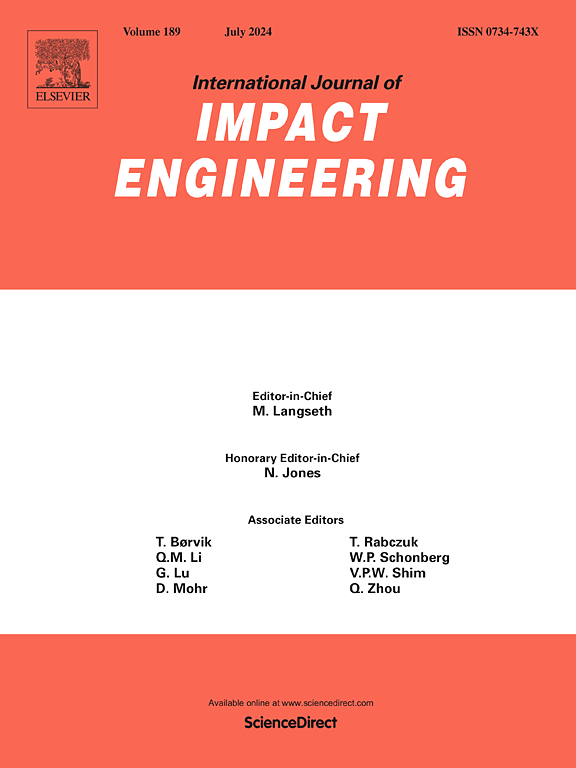A stochastic gradient estimate-based formulation for capturing the high strain-rate behaviour of a ductile target subjected to ballistic impact
IF 5.1
2区 工程技术
Q1 ENGINEERING, MECHANICAL
International Journal of Impact Engineering
Pub Date : 2025-01-15
DOI:10.1016/j.ijimpeng.2025.105224
引用次数: 0
Abstract
Investigating high strain-rate phenomena characterized by high-velocity impact is crucial for designing protective structures. Such impacts cause rapid microstructural changes, nonlinear deformations, plasticity, fractures, fragmentation, and thermal softening due to the generation of heat in ductile materials. Modelling these phenomena is often a challenging task, since the existing models rely on artificial parameters lacking a solid foundation, leading to unphysical behaviour at different load cases and posing scalability issues. In this regard, we develop a continuum theory based on the rigorously developed and versatile classical continuum mechanics. However, to circumvent the bottleneck in the form of the requirement of sufficient differentiability of the field variables in the classical theory, here, the derivatives are interpreted based on a stochastic gradient estimator (SGE). It considers the nonlocality and microstructural effect in thermo-visco-plastic deformations under high strain-rate impacts and interestingly remains well-posed even in the context of discontinuity of the field variables without requiring any additional restrictive prescriptions. The failure criteria are obtained using the Johnson-Cook model, and based on this, the interaction of material points ceases when the damage factor reaches a critical threshold. The proposed model accurately predicts the failure of a Weldox 460E target and projectile velocities, aligning well with the experimental data. This demonstrates that the method pushes the boundaries of existing numerical techniques and enables robust analysis of complex impact mechanics problems.
求助全文
约1分钟内获得全文
求助全文
来源期刊

International Journal of Impact Engineering
工程技术-工程:机械
CiteScore
8.70
自引率
13.70%
发文量
241
审稿时长
52 days
期刊介绍:
The International Journal of Impact Engineering, established in 1983 publishes original research findings related to the response of structures, components and materials subjected to impact, blast and high-rate loading. Areas relevant to the journal encompass the following general topics and those associated with them:
-Behaviour and failure of structures and materials under impact and blast loading
-Systems for protection and absorption of impact and blast loading
-Terminal ballistics
-Dynamic behaviour and failure of materials including plasticity and fracture
-Stress waves
-Structural crashworthiness
-High-rate mechanical and forming processes
-Impact, blast and high-rate loading/measurement techniques and their applications
 求助内容:
求助内容: 应助结果提醒方式:
应助结果提醒方式:


